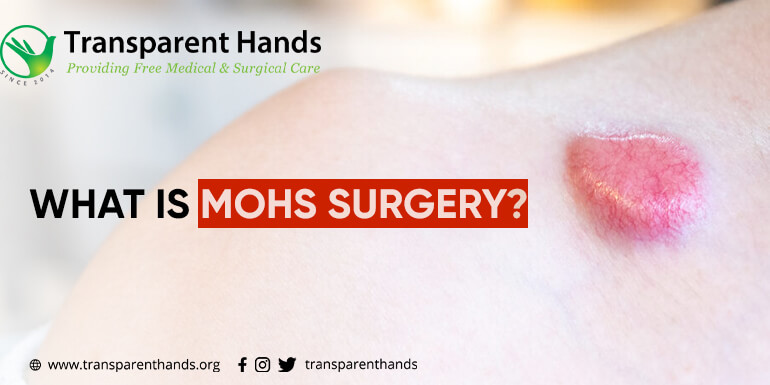What is Mohs Surgery

The Mohs procedure is performed to treat skin cancer. Thin layers of skin are removed in this medical procedure. The removed layers of skin are examined for cancer. Mohs surgery is performed until healthcare professionals are sure there are no signs of cancer.
Why Is Mohs Surgery Performed?
Treating skin cancer is the primary objective of performing Mohs surgery. Some of the most common types of skin cancer that are treated through Mohs surgery include squamous cell carcinoma and basal cell carcinoma. This surgery is an ideal option for cancers that have a high risk of relapsing. It is also a preferred choice for cancers that are hard to define, are too large, grow quickly, or are located in areas surrounded by healthy tissues.
What Are The More Common Risks Involved In Mohs Surgery?
There are certain risks that a patient is exposed to during and after Mohs surgery. The risk of bleeding is, perhaps, the most common one. Areas that undergo the Mohs procedure can become painful or tender. Infections are also a major concern during Mohs micrographic surgery.
What Are The Less Common Risks Involved In Mohs Surgery?
Certain risks are less common than the ones that we have described in the previous section. Areas that undergo surgery can become temporarily or permanently numb. This happens when the small nerve endings are cut. On the other hand, if a muscle nerve is cut to remove large skin cancers, then temporary or permanent weakness of the surgical area is a possibility as well. Other less common risks associated with the Mohs procedure include shooting pains in the area under surgery and a large scar.
How to Prepare For Mohs Surgery?
Surgeons often advise patients to stop taking certain medicines and supplements that they might be taking before undergoing Mohs surgery. It can be quite a lengthy procedure, which is why patients are advised to keep their schedule clear for the surgery day. Other preparatory tips include wearing comfortable clothes.
What Can You Expect During Mohs Surgery?
The average time that Mohs surgery takes is around four hours. However, sometimes, it can take a bit more time than that. Mohs procedure is performed under local anesthesia. Once the local anesthesia kicks in, a scalpel is used to remove the visible portion of the cancer. A thin layer of tissue under the skin cancer is also removed. A temporary bandage is placed where the skin was removed.
What Happens In The Lab During the Surgery?
Once the tissues are in the analysis lab, they are sliced into different sections and observed under a microscope. A map of the spots from where tissue pieces were removed is made. Doing this is important since it helps surgeons determine where they should continue the operation. More cancer means more Mohs procedures. As we mentioned earlier, Mohs surgery continues until the point when the last tissue sample removed is cancer-free.
What Happens After Mohs Micrography Surgery?
Once all of the cancerous material is removed, the surgeon focuses on fixing the wound. The options include letting the wound heal naturally, stitching up the wound, pulling skin from neighboring regions to cover wounds, or grafting skin from another body part to cover the wound. The wounds resulting from Mohs procedure are often repaired at the end of the surgery.
How Long Do You Need to Wear a Bandage?
Patients that undergo Mohs surgery are expected to wear a bandage for a period of seven days at the very minimum. However, the exact time for which a patient needs to wear a bandage depends on the patient’s situation.
What About the Results?
One of the biggest benefits of Mohs surgery is that the patients don’t have to wait for the results for a long time. Instead, they are given the results right away. Patients can end the appointment only when all of the skin cancer has been removed. Often, a second or third visit is required to ensure that patient’s wound is healing properly.
Who should undergo Mohs surgery?
Patients suffering from one skin cancer or a few skin cancers that are very close together are ideal candidates for Mohs surgery. Certain skin cancer types, for example, basal cell carcinoma, can be treated with Mohs procedure.
How Long Does It Take to Heal?
The wounds resulting from the Mohs procedure can take a bit of time to heal completely. Normally, postoperative wounds take around 28-42 days to heal completely. As for the scar, it continues to heal and develop over the next 6-12 months.
Is Mohs Surgery Costly?
Like most surgical procedures, Mohs also happens to be a costly surgical procedure. Unless it is covered by the patient’s insurance, it can be a burden on the wallet. However, thanks to charitable organizations, patients from underprivileged backgrounds can undergo the Mohs procedure as well.
(The information in this article should not be taken as a substitute for professional medical advice.)










Leave a Reply